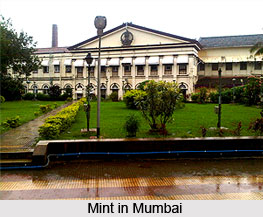 Architectural developments of Bombay during British rule were perhaps the most concentrated and engaging, standing regal to this day. Being a key city for British operations, it was sometimes challenged alongside Calcutta in its buildings and constructions. As such, architecture was a foremost issue that needed notice.
Architectural developments of Bombay during British rule were perhaps the most concentrated and engaging, standing regal to this day. Being a key city for British operations, it was sometimes challenged alongside Calcutta in its buildings and constructions. As such, architecture was a foremost issue that needed notice.
In 1827, the British East India Company constructed a new Mint in Bombay to the design of Major John Hawkins of the Bombay Engineers.
In order to further developments of architecture of Bombay under British rule, in 1835, to rival Calcutta, a new Town Hall was constructed in Bombay. Of neo-classical design, it housed the library of the Asiatic Society. The structure possessed numerous embellishments to cope with Bombay`s weather.
In the same year, the new Christ Church of Bycullah (present day Bycullah) was consecrated. The structure integrated into its design some Doric columns which had originally been intended for the new Town Hall. Later the Church added a fine monument to Sir Robert Grant (1780-1838), Governor of Bombay.
This article is a stub. You can enrich by adding more information to it. Send your Write Up to content@indianetzone.com






































